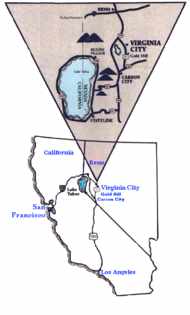
In June 1996, I visited Virginia City, Nevada, one of America's largest Historic Landmarks. The first truly industrial city in the West began in the late 1850's. Some say Virginia City's rich gold and silver mines financed the Civil War.
Now rich in history, Virginia City and the Comstock Lode still maintain the flavor of the hifalutin mining days, when Mark Twain roamed the streets and everybody wanted a piece of the "Richest Place on Earth."
In the spring of 1850, a party headed for the California Gold Fields, stopped to camp one night close to the Carson River near what is now Dayton, Nevada. Later, they named their encampment Gold Canyon. Will Prouse, one of the party, panned a little gold that night, but apparently not enough to cool his enthusiasm for his quest for riches in California.
After the discovery of gold in California in '49, men hurried from all over the country to seek their fortunes in what was to be known as the Gold Rush. Will Prouse was one of them, along with John Orr and Nick Kelly, who also unearthed small amounts of gold in Gold Canyon.
However, they had "gold fever" and left their camp and resumed their trek to California. Almost a decade later, in 1859, some of these same men came back over the High Sierra to get in on the newest bonanza, this time in silver.
Several years earlier, two brothers, Ethan and Hosea Grosch had uncovered a rich vein of silver on the eastern slopes of Mt. Davidson (later to be known as Sun Mountain). Both brothers died before any real mining was begun and their secret died with them.
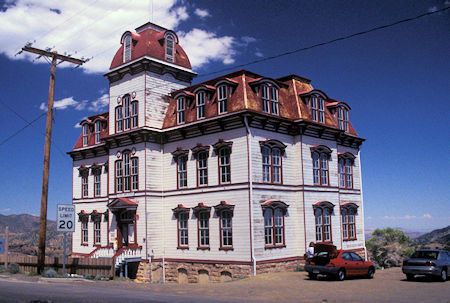
Fourth Ward School, Virginia City, Nevada
In the fall of 1859, two prospectors searching for gold uncovered the first significant deposits of silver. Peter O'Riley and Pat McLaughlin were more annoyed with it than pleased, for it was in the form of heavy blue clay, which made getting the silver separated very difficult.
Some of the heavy blue stuff was still clinging to the sample that they sent to be assayed and an alert assayer in Grass Valley, California realized this was an extremely rich silver find in an unfamiliar form.
Almost immediately, a blustery character named Henry Comstock appeared on the scene, stating that O'Riley and McLaughlin had jumped a claim on which he held title. Claim jumping was not taken lightly in those days, so the unfortunate two were satisfied with Comstock's agreement to let them work the claim.
He was the con man of his day, and fast talked himself into being co-discoverer of many diggings in that area. That first big silver strike was called the Ophir. These men were not aware of the vast amounts of silver that would someday be brought to the surface and gave a third of it to a couple of fellows who supplied some crude equipment to separate the precious metal from the sand and dirt.
The Ophir was divided into sixths with Comstock's "partner", Emanual Penrod making up the sixth person involved in the original claim. Because of his glib tongue and blustery persuasive ways, Henry Comstock became co-owner of almost every mine in sight, and the whole area came to be known as the "Comstock Lode".
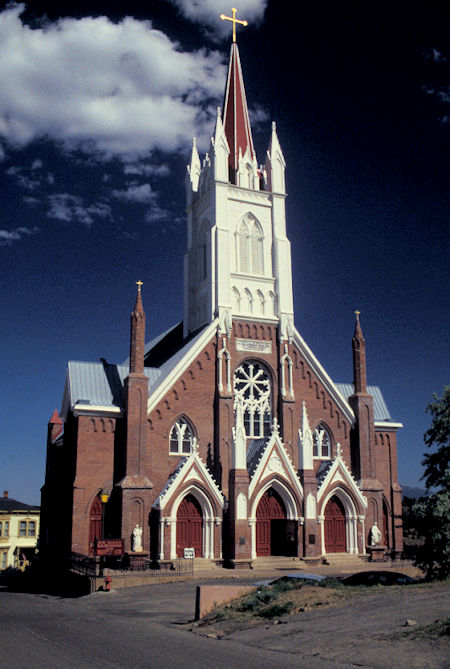
St. Mary Catholic Church, Virginia City, Nevada
Almost simultaneously, James Finney (called Old Virginny) and his partners dug into a rich deposit where some years later the Gold Hill mines would be located. It is Finney who is credited with giving Virginia City her name in honor of his home state.
The miners had it made - they lived only for the day and what it would take to buy entertainment and the good things in life. Their shortsightedness didn't bring comfort for the rest of their days. Comstock sold his sixth of the Ophir for a mere $11,000, and a few short years later ended his life with a revolver.
O'Riley and McLaughlin fared little better. O'Riley, after selling his sixth for $40,000 died some time later in an insane asylum. Pat McLaughlin worked for $40.00 a month as a ranch cook and died without enough for a decent burial, and was laid to rest in a pauper's grave.
His share of the Ophir was sold to a then little-known family. George Hearst paid $3,000 for it, and is rumored to have been the beginning of the fabulous Hearst fortune. James Finney is rumored to have sold his share of the Ophir for a bottle of whiskey and a blind horse, and was also buried in a pauper's grave.
Of the prospectors who were there in 1859, Sandy Bowers was the most fortunate. More conservative than his fellow miners, he didn't throw his findings away on passing fancies, but kept his small claim intact with dogged determination.
He lived at a respectable boarding house run by Eilley Orrum, who also did the laundry for the more prosperous of the early miners. With her earnings from the rooms, meals and chores, she managed to buy a section of a claim right next to Bowers'.
It seemed rather natural that Sandy and Eilly would get together. She was the best cook in the area, a good homemaker and knew a good catch when she saw one. They were soon married and consolidated their claims, taking $100,000 a month from them. They traveled widely, spent years in Europe and the mansion he built for Eilley between Virginia City and Lake Tahoe still stands as a monument to those splendid days.
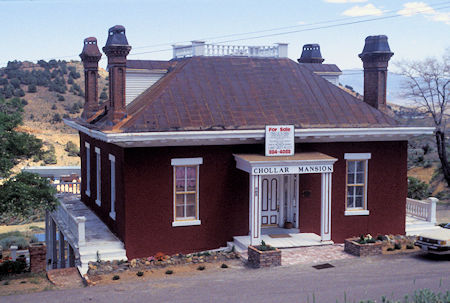
Chollar Mansion - Virginia City, Nevada
One man's misfortune is often another's gain, as was the case with four capable and intelligent mine operators. In the heart of the Comstock Lode two mines seemed to be played out and the owners were unloading stock on the San Francisco Stock Exchange.
These four men played a cagey game and bought up the stock whenever it appeared on the market. In 1873, they sank an exploratory shaft into the Consolidated Virginia with the fervent belief there was more to be had from the claims.
After several false leads, they hit a vein of unbelievable proportions, fully fifty four feet wide and undetermined height and depth. They were rich beyond their wildest dreams, and with careful management, the value of their holdings soared from $40 million to $160 million. The four men who were to go down in history as Kings of the Comstock were James Fair, James Flood, John Mackay and William S. O'Brien.
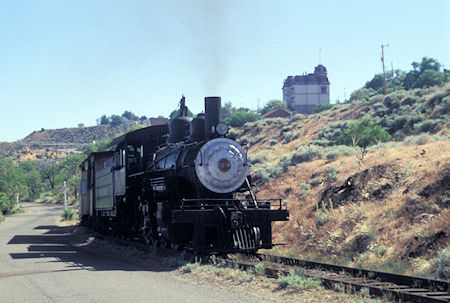
Virginia & Truckee Railroad, Virginia City, Nevada
William Sharon arrived in 1864 and loaned money to mill owners on their holdings. When hard times came, Sharon and his associates controlled all of the leading mines and mills in the area.
He could foresee the need for an efficient and economical means of moving the ore from mines to mills, and urged two of his associates, Darius Mills and William Ralston, to join him in building the Virginia and Truckee Railroad which eventually ran from Reno to Carson City to Virginia City and later to Minden.
The V.&T.R.R. served the miners and mill owners for over eighty years. It was both a workhorse and the conveyor of some of the most luxurious private railroad cars in the world. Sharon and his partners shared $100,000 a month from the profits of this brainchild and their other holdings.
Read more about The Crookedest Short Line in America, the Virginia and Truckee Railroad here.
William Wright, who took the pen name of Dan DeQuille, was the journalist of his day, and much of the credit for Virginia City's boom times is due to his mining reports that had worldwide circulation in the Territorial Enterprise newspaper.
He was quite a storyteller, and had as his apprentice, a young man named Samuel Clemens. We know him as the beloved Mark Twain. These two made their mark in the literary world, and both had their start in the "Queen of the Comstock Lode".
The investments made in mining on the Comstock in the 1860's, 1870's and 1880's fueled the building of San Francisco. William Ralston and Crocker, founders of the Bank of California made their money in Virginia City. Names like Leland Stanford, George Hearst, John Mackay, William Flood and many others made their fortunes in Comstock mining.
It wasn't only men who made their mark in the history of this area. Julia Bulette was the "talk of the town" in Virginia City. Men showered her with gifts - jewels, furs, champagne and fresh flowers, which were a tribute unheard of in the Comstock.
Julia's Palace brought what little culture was to be had in those early days. Her lavish dinners featured fine wines and French cuisine. A "Madame" with a bevy of beauties on hand to entertain her gentlemen clientele, she prospered and enjoyed the favors of only the wealthiest and most charming customers. Julia's story came to a sad end when she was found strangled to death in her bed by a maid.
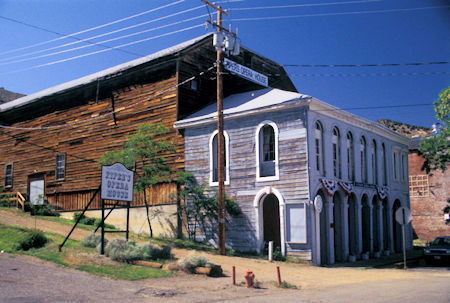
Historic Piper's Opera House - Virginia City, Nevada 1996
With the newly affluent came the desire for more cultural pastimes, and John Piper soon took his place as King of the entertainment world, bringing world famous stars of the theater and opera to Piper's Opera House. Box seats were reserved for such notables as John Mackay and Adolph Sutro on opening nights.
They were entertained by Maude Adams, Edwin Booth, the Georgia Minstrels, Lillie Langtry, Adah Isaacs Menken, Madame Helen Majeska and Emma Nevada, to name just a few.
At the peak of its glory, Virginia City was a boisterous town with something going on 24 hours a day both above and below ground for its nearly 30,000 residents. There were visiting celebrities, Shakespeare plays, opium dens, newspapers, competing fire companies, fraternal organizations, at least five police precincts, a thriving red-light district, and the first Miner's Union in the U.S. The International Hotel was six stories high and boasted the West's first elevator, called a "rising room".
The "Queen" remains a nostalgic reminder of what used to be, still with traces of grandeur on her weathered and wrinkled face. Although there are many charts and figures, it is estimated that from 1850 to 1920, the Comstock Lode yielded nearly a billion dollars in gold and silver, and a history that is priceless.
Today, many mansions such as the Castle, the Mackay and the Savage stand as monuments to the opulence of life on the Comstock. The Virginia & Truckee Railroad runs again from Virginia City to Gold Hill. The largest federally designated Historical District in America is maintained in its original condition. "C" Street, the main business street, is lined with 1860's and 1870's buildings housing specialty shops of all kinds.
Here are some additional links to Virginia City information:
Fourth Ward School, erected 1875, 14 class rooms, two study halls, built to accommodate 1025 students, graduated last class in 1936. Now a museum.
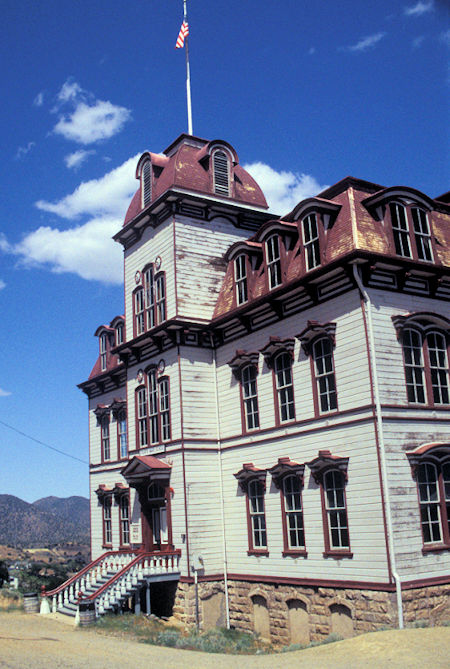
Fourth Ward School, Virginia City, Nevada
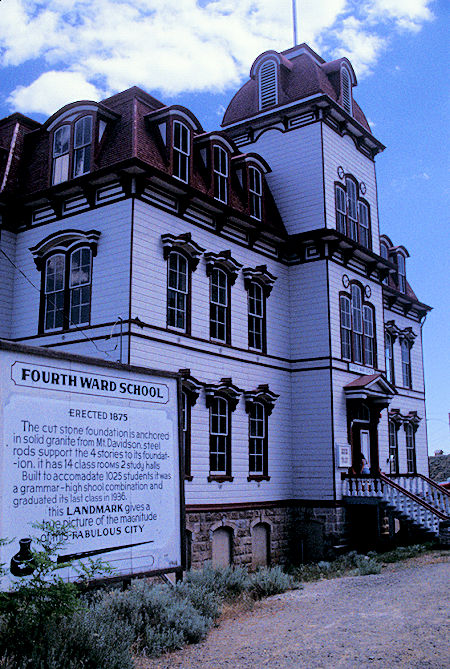
Fourth Ward School, Virginia City, Nevada
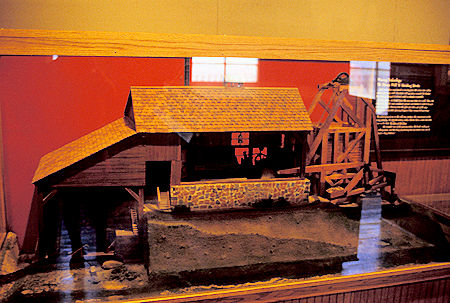
Mining exhibit in Fourth Ward School, Virginia City, Nevada
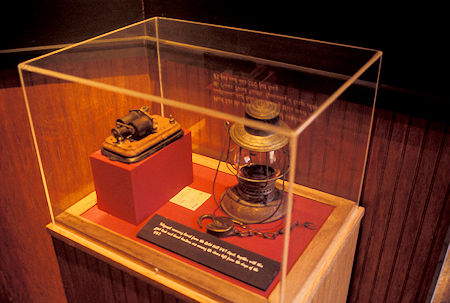
Exhibit in Fourth Ward School, Virginia City, Nevada
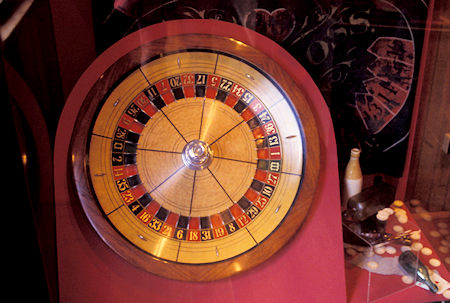
Roulette Wheel exhibit in Fourth Ward School, Virginia City, Nevada
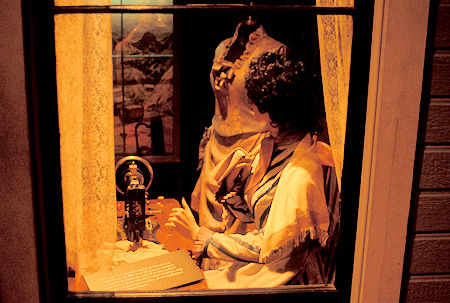
Clothing/Sewing exhibit in Fourth Ward School, Virginia City, Nevada
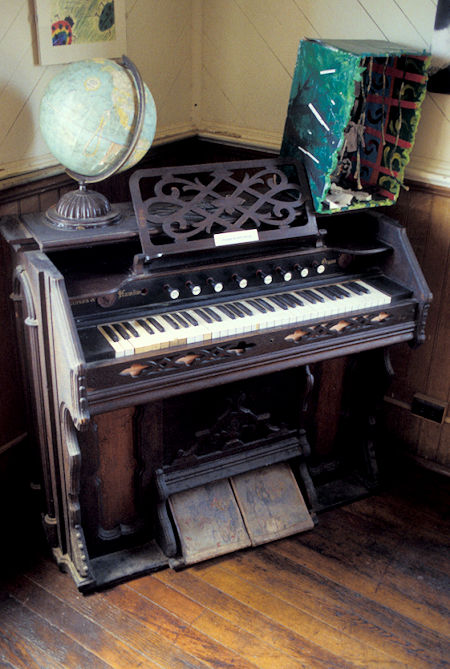
Organ in Fourth Ward School, Virginia City, Nevada
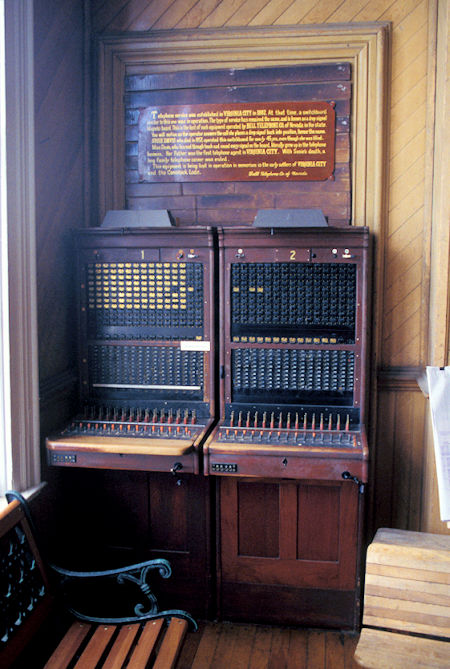
Switchboard exhibit in Fourth Ward School, Virginia City, Nevada
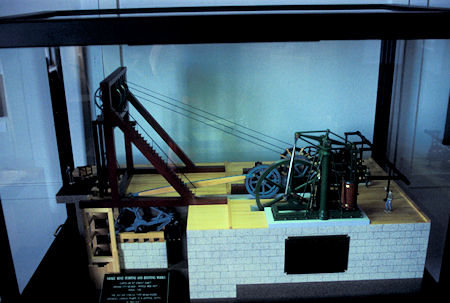
Mining exhibit in Fourth Ward School, Virginia City, Nevada
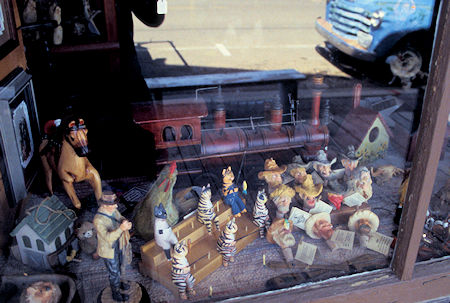
Store Window, Virginia City, Nevada
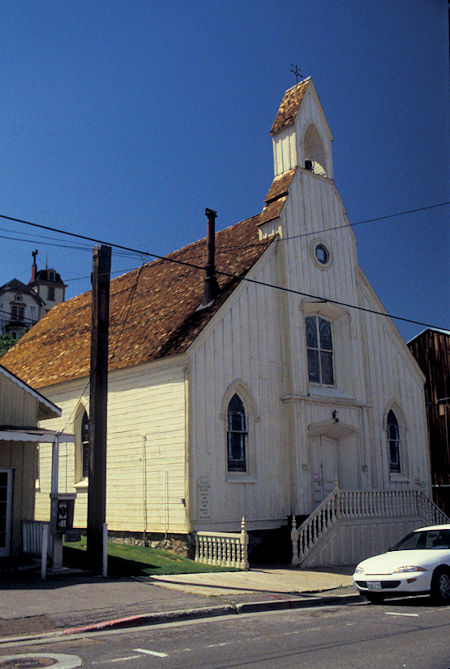
Presbyterian Church, Virginia City, Nevada
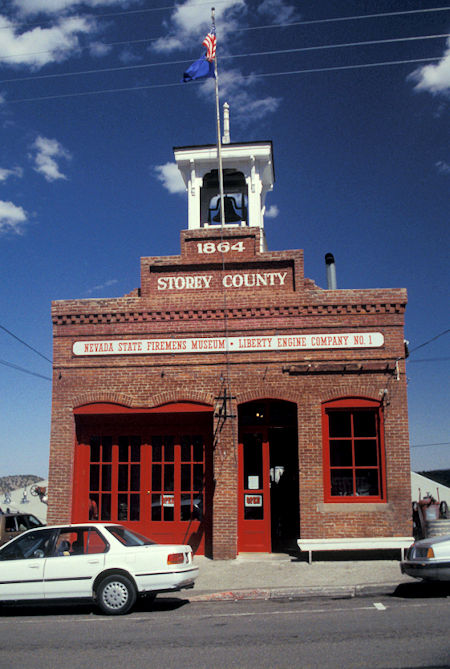
Historic Firehouse - Storey County 1864, Nevada State Fireman's Museum,
Liberty Engine Company #1, Virginia City, Nevada
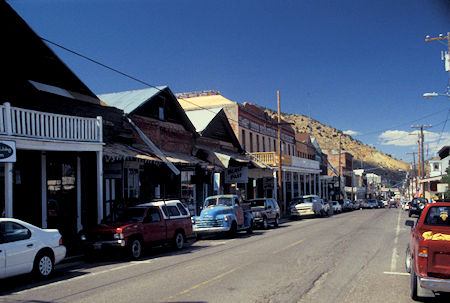
Main Street, Virginia City, Nevada
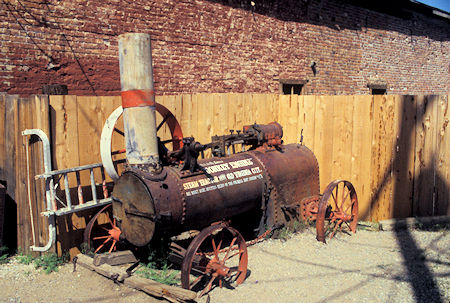
Donkey Engine, Virginia City, Nevada
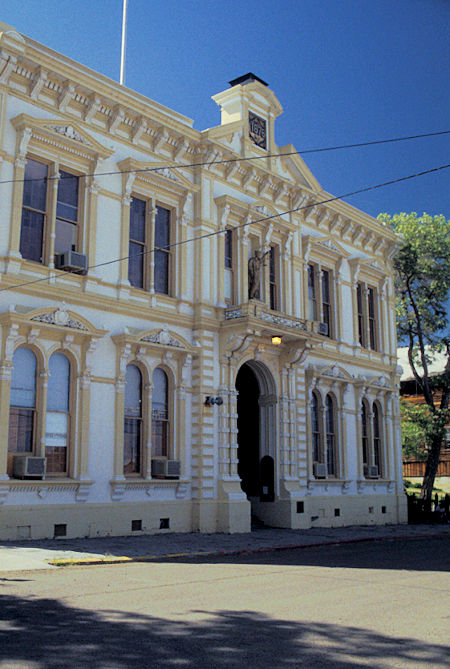
Courthouse (historic building currently in use), Virginia City, Nevada
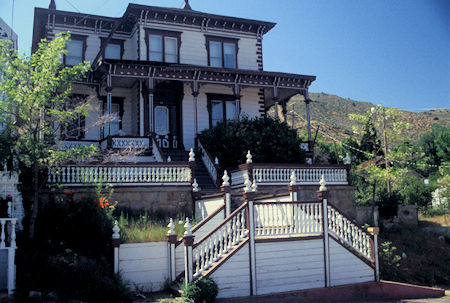
Old Mansion, Virginia City, Nevada
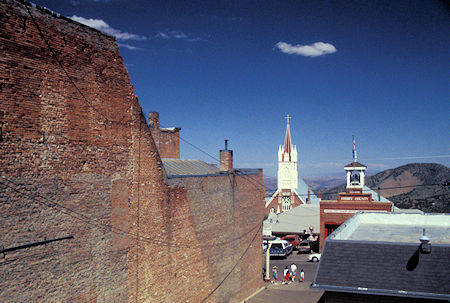
Old brick building wall and general scene
toward the fire house and St. Mary Catholic Church, Virginia City, Nevada
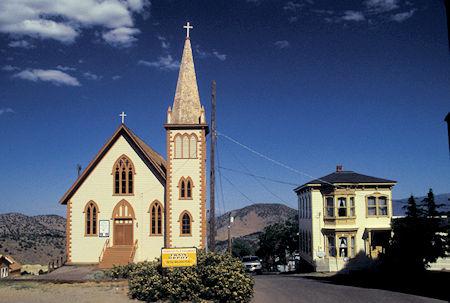
St. Paul Episcopal Church, Virginia City, Nevada
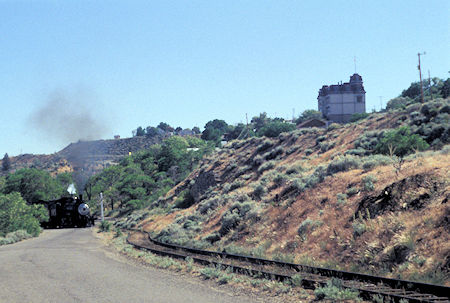
Virginia & Truckee railroad with Fourth Ward School on the hill, Virginia City, Nevada
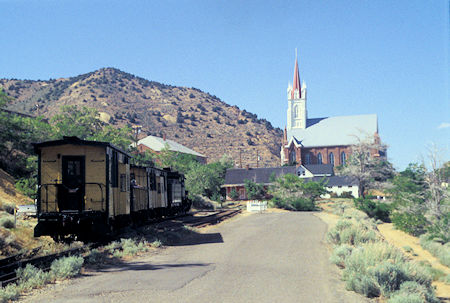
Virgina & Truckee Railroad, Virginia City, Nevada
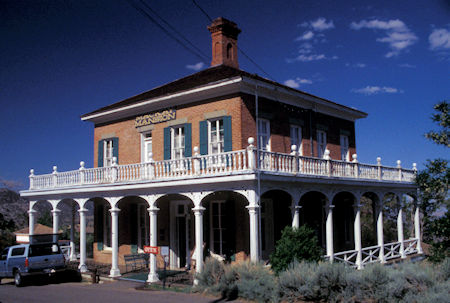
MacKay Mansion, Virginia City, Nevada